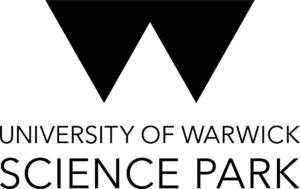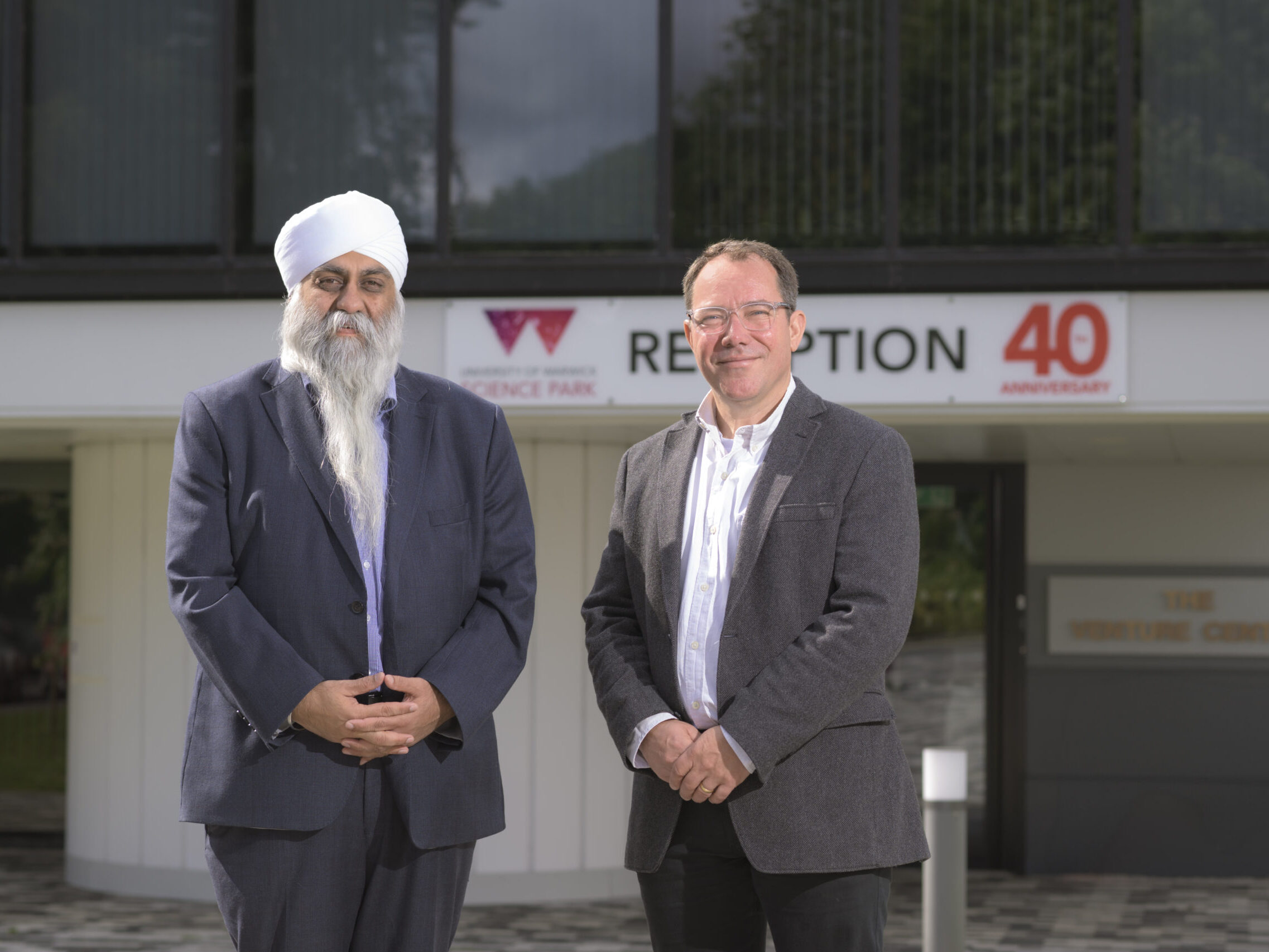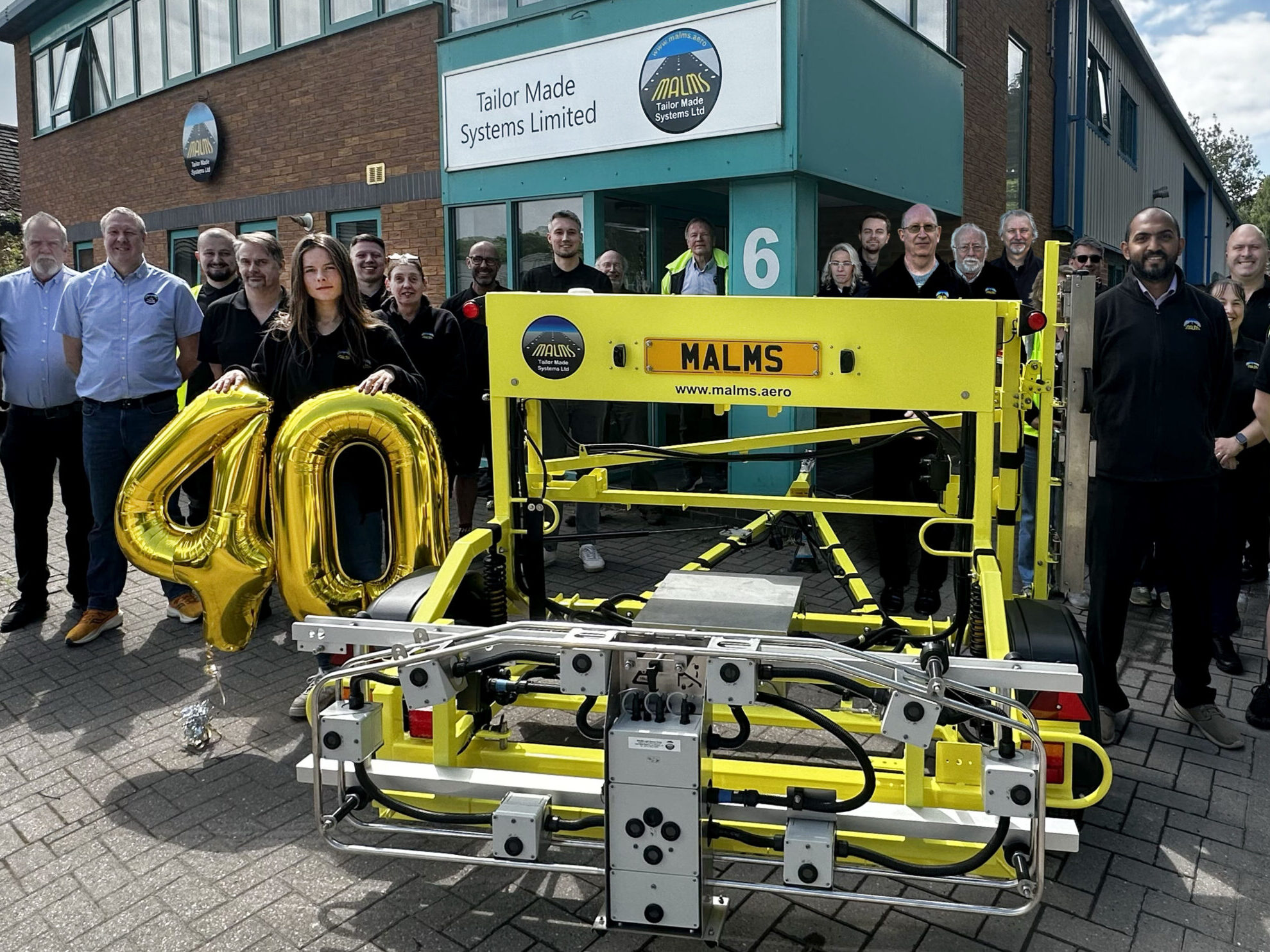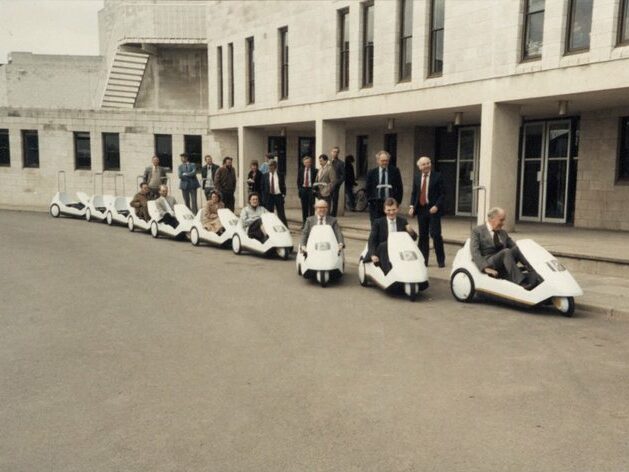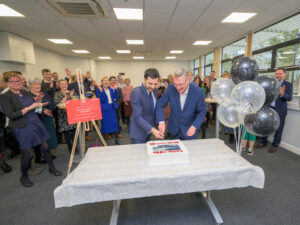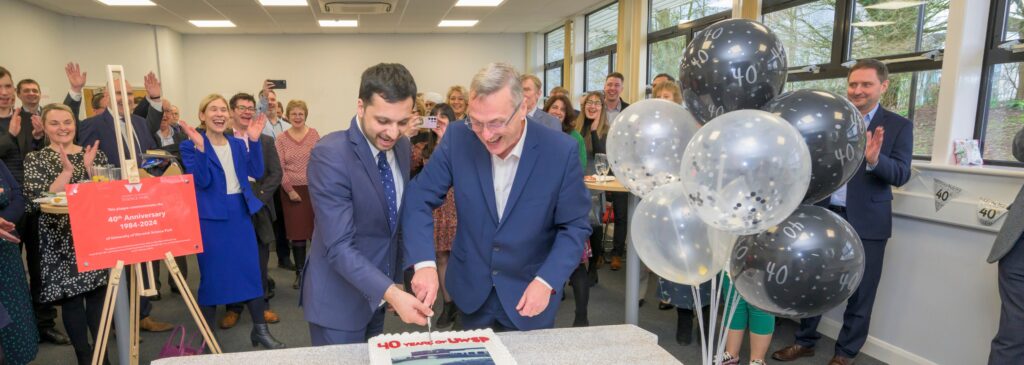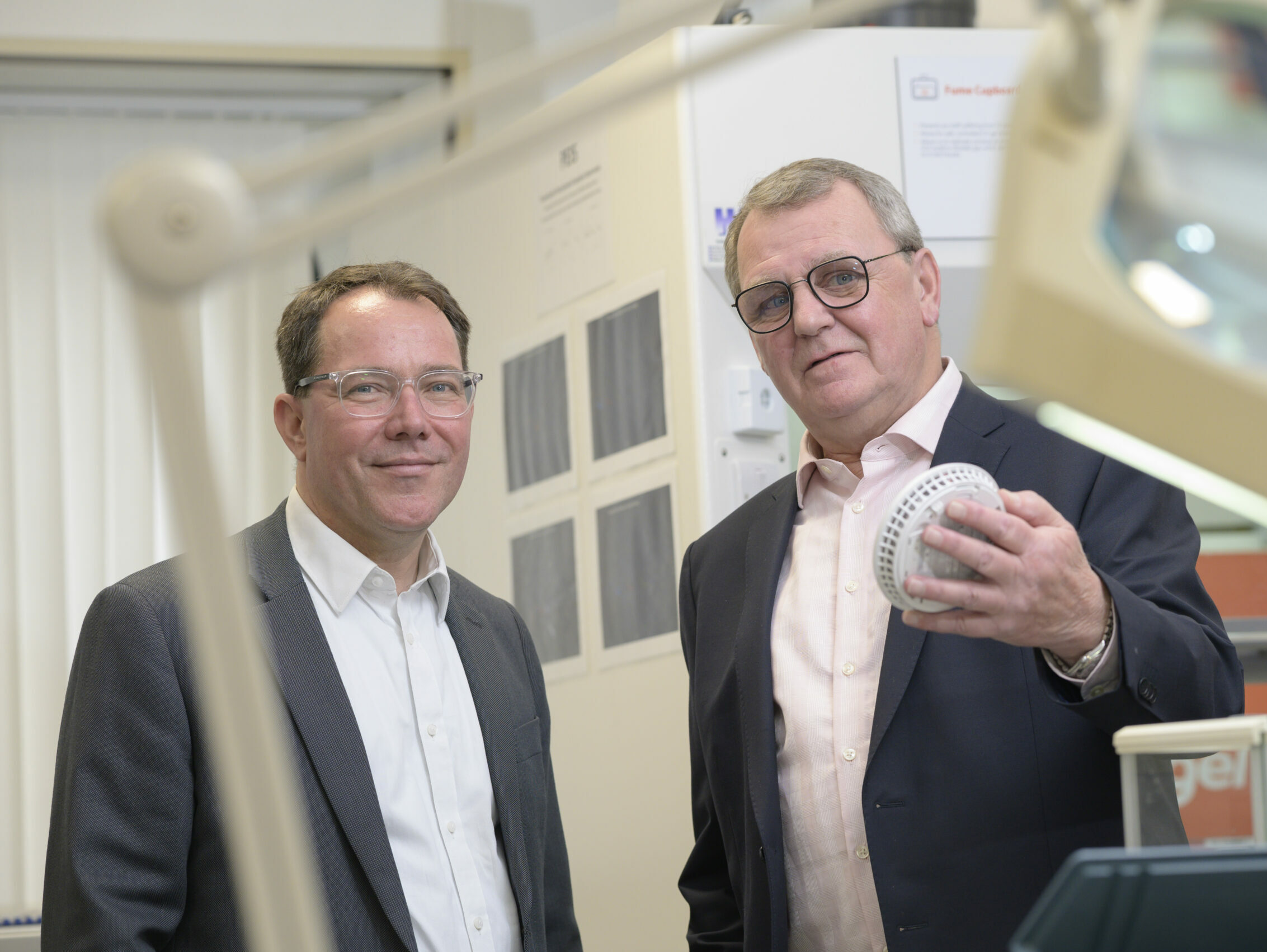
As the University of Warwick Science Park celebrates its 40th anniversary this year, we’re taking a look back at some of its history and speaking to former tenants or those connected to the Science Park to share their stories.
The first ever tenant at the Science Park was ComputerVision, a CAD/CAM business which grew exponentially during the 1980s, before being sold in 1998.
Graham Whitworth, a senior aerospace sales account manager at the time, remembers the benefits of locating to the Science Park with the added bonus of its association with the University of Warwick Manufacturing Group.
Graham later made a successful return to the Science Park through his role as Group Executive Chairman and CEO at leading smoke alarm manufacturer FireAngel, where he is now a Non-Executive Director.
We spoke to Graham about what the Science Park was like in its infancy, and how it has stayed true to its values 40 years on.
Automotive manufacturing and aerospace were the dominant industries within the Midlands in the 1980s, with the likes of Rover, Jaguar, Land Rover, Lucas, GEC and Rolls Royce Aerospace employing thousands of people in the region.
Another burgeoning global industry at that time was computer aided design and manufacturing software, or CAD/CAM, which dramatically sped up the design, testing and time to market of new products to such an extent that manufacturers were willing to pay millions for the right software and get ahead of the competition.
ComputerVision was one such CAD/CAM company. Originally founded on the US East Coast by Ivy League graduates in the mid-1970s, it had set its sights on the European and UK markets by the 1980s.
Originally opening an office close to Heathrow Airport, it soon became clear that ComputerVision needed to be closer to the heart of automotive and aerospace in the Midlands if it was to be successful in the UK.
After opening a small regional office in Birmingham, Graham Whitworth, who had a strong background in technology businesses, joined the company in 1982 as part of a highly focussed Automotive and Aerospace division from its office in Birmingham.
Soon after, Graham joined a new facility opening on the site of the University of Warwick, renowned in the Midlands for its Advanced Manufacturing division which already had well-established partnerships with many automotive manufacturers thanks to the work of the late Professor Lord Bhattacharyya.
That site was the first incarnation of the University of Warwick Science Park, and ComputerVision became the first company to become a tenant there in 1984.
“It made a lot of sense to us to move there,” Graham said. “The Science Park had positioned itself to be at the forefront of all of the manufacturing enterprise coming out of the Midlands, while also having excellent links with the University itself. Birmingham was a good location, but the Science Park was even better.
“The whole place was an incubator for businesses like ours along with young, cutting-edge start-ups.
“We only had small offices to begin with, but we were rubbing shoulders with some seriously intelligent and forward-thinking entrepreneurs. It was a very exciting time for us.”
With CAD/CAM technology revolutionising industries like automotive and aerospace manufacturing, and the access the University had to major potential customers, ComputerVision’s growth was exponential.
Its technology was used by a host of blue-chip clients, with Rolls Royce Aerospace purchasing a system for $42 million in 1986 – the equivalent of $112 million today.
Graham said: “This success led ComputerVision to make the base in the Science Park its UK headquarters.
“We were able to develop bigger units at the Science Park to work in as a result, before taking up a lot of space at the Science Park’s Vanguard Centre until eventually constructing the entirety of Argent Court as its UK HQ.
“At its peak, ComputerVision had 20 offices all over Europe and we were doing brilliantly well. The partnerships the University had cultivated with manufacturers in the Midlands and across Europe such as Airbus Industries, the Science Park’s brilliant ethos all contributed hugely to this.”
But like many forms of technology, time eventually catches up. In the late 1990s, CAD/CAM became much easier to program thanks to computing power and affordability increasing dramatically.
This meant ComputerVision faced much more competition for its products, and eventually led to the company being taken over by industry leaders Parametric Technology in 1998, a year after Graham decided to leave the company.
He said: “At that time, I was at a point in my life where regular travelling to Europe and the US and the increased competition began to take its toll.
“Parametric were by far the market leaders in CAD/CAM and we had slowed down by the mid-1990s so it was inevitable that ComputerVision would be taken over.”
After six months away from work, Graham founded his own company, Datavine, based at the Coventry University Technology Park and took on a role with CAD/CAM firm Division in Bristol, where he became managing director.
Division was also bought by Parametric in 1999, which left Graham with money to invest after a lock-in period.
Having kept on his Coventry office, Graham met with the founders of FireAngel Nick Rutter and Simon Tate who were also based there.
Their concept was a different kind of smoke alarm that could be fitted on top of a lightbulb and was charged when the light was on, instead of owners having to change batteries.
Impressed, Graham put up some of his money from the Division sale as seed capital.
“Here was a company founded by two clever people which I thought had real potential,” Graham said.
“There were so many smoke alarms in people’s homes that didn’t have batteries in because people were either fed up with them malfunctioning or had simply forgotten to do so.
“This was a business that I knew could save lives so I really wanted to be a part of it.”
FireAngel was initially based at the Technology Park, but its business rates with its CV1 postcode were detrimental to its bottom line.
When considering alternative locations, Graham knew the Science Park would be an excellent choice.
He said: “While I didn’t think I would be returning to the University of Warwick Science Park so soon, it made perfect sense to relocate FireAngel there. All the positive aspects of the Science Park in the 1980s essentially remained in the early 2000s.
“Being connected up with like-minded, cutting-edge business was still very appealing, and the links to the University were just as valuable to FireAngel as they were to ComputerVision.
“The business was able to grow remarkably, peaking at a value of £150m on the London Stock Exchange and now having sold more than 85 million life-saving devices in people’s homes.
“We are still based at the Vanguard Centre where ComputerVision once was, and we still love being based at the Science Park.”
Graham was surprised when he was told that 2024 was the Science Park’s 40th anniversary.
“I genuinely couldn’t believe how fast the time had gone,” he said. “Since we first moved in all those years ago, the Science Park has grown massively, but its core values of encouraging innovation thanks to its affordable rates, University connections and genuine support of new ideas have remained.
“I think it is those values that have allowed it to still be an incredibly successful place for cutting-edge companies to do business. Other incubation centres have fallen by the wayside over the years, but the Science Park has stayed relevant and attractive for 40 years, which is a tremendous achievement.
“I have very fond memories of the early days, and I still enjoy coming here now 40 years later. If the Science Park sticks to the values that have made it so successful, I can’t see why it wouldn’t have another 40 years of success.”
